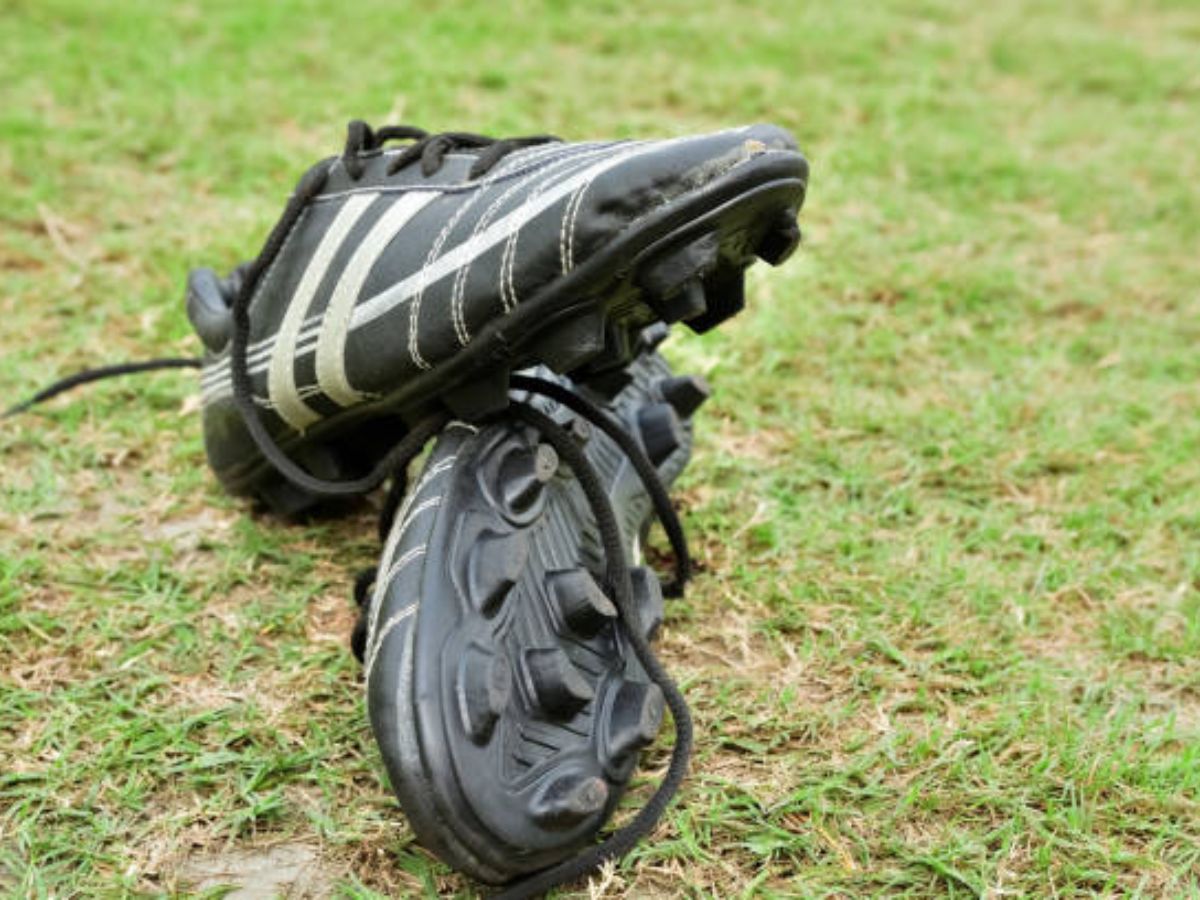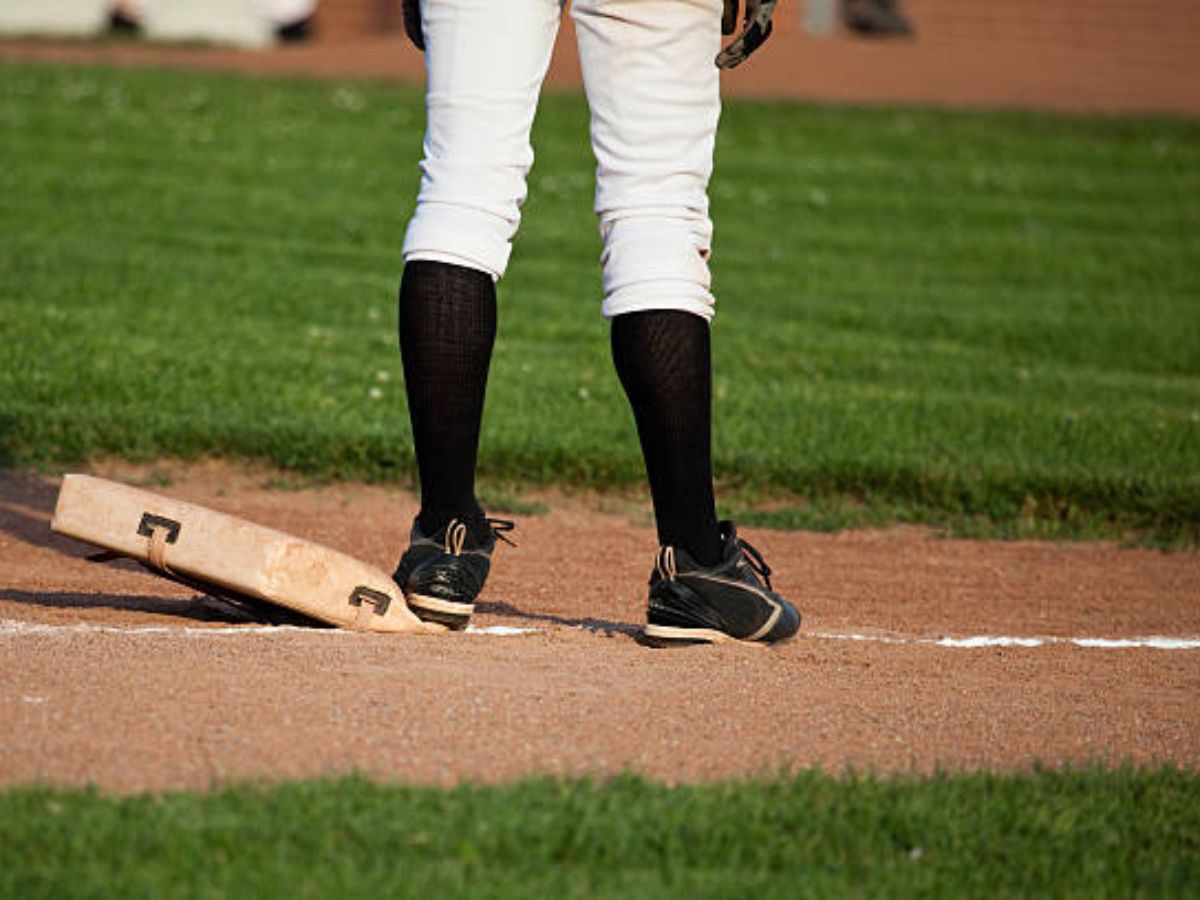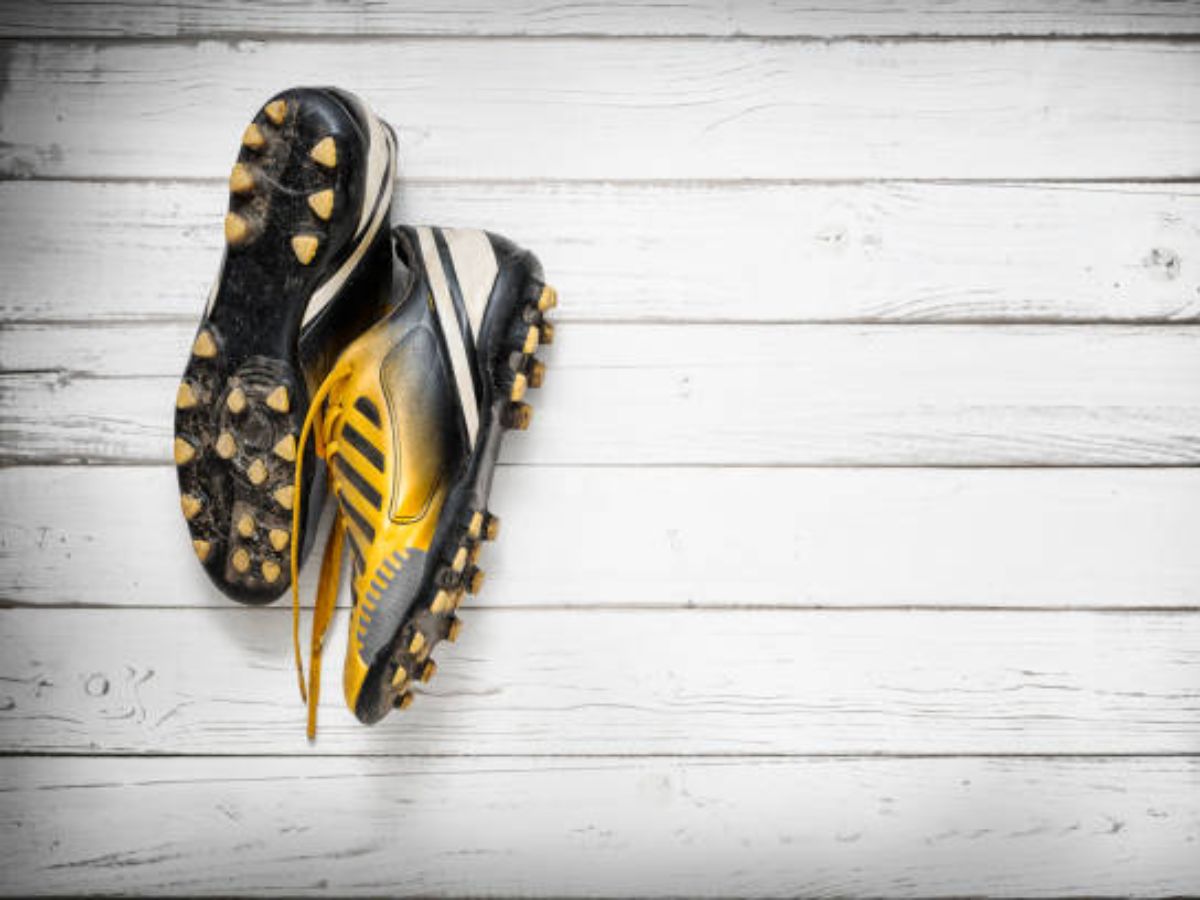To break in cleats, wear them for short periods of time and gradually increase the duration as they become more comfortable. Additionally, try warming them up with a hair dryer or using a leather conditioner to soften the material.
Breaking in cleats involves wearing them for short periods of time and gradually increasing the duration as they become more comfortable. This can be complemented by using a hair dryer to warm them up or applying a leather conditioner to soften the material.

By following these steps, you can ensure that your cleats are properly broken in and ready for optimal performance on the field. Remember to take the necessary precautions to avoid any discomfort or potential injury during the breaking-in process.
Contents Inside
Why Properly Breaking In Cleats Is Crucial
Breaking in cleats properly is crucial to prevent discomfort, foot pain, enhance performance and control, and avoid potential injuries. The process involves gradually wearing the cleats to let them adapt to your feet. Start by wearing them for short intervals to allow your feet to adjust.
Gradually increase the duration and intensity of usage over time. This method helps in avoiding blisters and soreness. Another tip is to wear them during practice sessions rather than for a full game immediately. This gives your feet time to get used to the cleats without putting excessive strain on them.
Additionally, it is important to choose the right size and style of cleats that suit your foot shape and playing style. Taking these steps will ensure that your cleats provide the necessary comfort and support while maximizing your performance on the field.
Understanding Cleat Materials And Construction
Cleats are essential for athletes who need reliable and sturdy footwear during sports activities. Understanding the materials and construction of cleats is crucial in finding the perfect pair for your sport. Different types of materials, such as leather, synthetic, or mesh, offer different benefits in terms of durability, flexibility, and breathability.
Identifying the ideal material for your specific needs is key. Additionally, examining cleat construction and design can make a significant impact on performance. Factors like stud configuration, sole thickness, and overall shoe structure can affect traction, stability, and agility. By considering these aspects, you can ensure that your cleats are optimized for your sport, providing you with the grip and support you require to excel on the field or court.
Step-By-Step Guide To Breaking In Cleats
Breaking in cleats is an essential step to ensure maximum comfort during sports activities. Choosing the right size and fit is crucial in this process. Gradually breaking them in allows your feet to adjust and prevents discomfort. Additionally, utilizing stretching techniques can improve flexibility and prevent potential injuries.
It is important to start with shorter durations of wear and gradually increase the time. This approach will help the cleats form to the shape of your feet without causing excessive pain. Moreover, performing stretching exercises, such as toe curls and ankle rotations, can enhance the flexibility of the cleats’ material.
In order to break in cleats effectively, it is vital to be patient and consistent in the process. Remember to prioritize your comfort and safety while engaging in physical activities.
Utilizing Heat And Moisture For Cleat Break-In
Breaking in cleats can be made easier by utilizing heat and moisture. A hairdryer or heat gun can be used to warm up the cleats, helping them to mold to your feet. It’s important to consider using heat-resistant materials to avoid damaging the cleats.
Another method is hot water soaking, where you can immerse the cleats in hot water for a short period of time. This can help soften the materials and make them more pliable. Remember to avoid starting sentences with commonly overused words and phrases to keep the content engaging and unique.
By following these tips, you can break in your cleats effectively and comfortably.
Utilizing Cold Techniques For Cleat Break-In
Breaking in new cleats can be made easier by utilizing cold techniques such as freezing or chilling methods. These methods involve using cold therapy tools to gradually stretch and soften the materials of the cleats. By subjecting the cleats to cold temperatures, you can prevent damage to the materials and ensure a comfortable fit.
The cold therapy tools can be applied directly to the tight areas of the cleats, gradually expanding them without causing any harm. This process helps break in the cleats without the need for excessive wear or discomfort. The freezing or chilling methods offer a practical solution for those looking to break in their cleats quickly and efficiently, resulting in improved performance on the field.
So, give cold techniques a try and enjoy the benefits of perfectly fitting cleats.
Speeding Up Cleat Break-In With Conditioning Oils And Sprays
Speed up the break-in process of your cleats by using conditioning oils and sprays. These products serve a purpose by allowing the leather to soften and mold to your feet. Apply the oils and sprays effectively by following the instructions provided.
Be careful not to overuse them, as this can potentially damage your cleats. Remember to avoid starting sentences with commonly overused words and phrases. Vary your sentence structure to keep the reader engaged. By following these guidelines, you can break in your cleats efficiently and effectively, maximizing your comfort and performance on the field.
Proper Maintenance And Care For Your Cleats
Proper care and maintenance of your cleats is essential for their longevity. After each use, ensure to clean and dry them thoroughly. This helps to prevent dirt and moisture from accumulating, which can cause damage and odor. Additionally, storing your cleats properly is crucial.
Use a shoe bag or dedicated cleat storage to maintain their shape and condition. Avoid leaving them in extreme temperatures or in a damp environment. Regularly inspect your cleats for signs of wear and tear. If the studs are worn down or the upper material is damaged, it may be time to replace them.

By following these simple guidelines, you can prolong the lifespan of your cleats and optimize their performance on the field.
Recommendations For Obtaining Professional Assistance
Obtaining professional assistance when it comes to breaking in cleats is crucial. One way to seek advice is by consulting sports shoe experts who possess knowledge and experience in this field. Additionally, reaching out to trainers and coaches who are well-versed in the intricacies of cleat break-ins can provide valuable insights.
Moreover, exploring online resources and tutorials specific to cleat breaking techniques can also prove to be beneficial. These platforms offer a multitude of tips, tricks, and step-by-step guides to help individuals break in their cleats effectively. By following these recommendations, individuals can ensure that their cleats are broken in properly, enhancing their comfort and performance on the field.
Taking Your Performance To The Next Level
To take your performance to the next level, it’s crucial to incorporate regular training exercises. By developing strength and agility through a consistent routine, you can maximize your athletic potential. Additionally, it’s important to continually monitor the performance of your cleats.
Regular checks and maintenance ensure that your footwear is in optimal condition, allowing for improved grip and traction on the field. Remember to inspect the cleat studs and replace any that are worn or damaged. These small adjustments can make a big difference in your performance and reduce the risk of injury.
So, break in your cleats effectively and be prepared to dominate the game!

Frequently Asked Questions For How To Break In Cleats
How Long Does It Take To Break In New Cleats?
Breaking in new cleats typically takes around 1-2 weeks. During this time, it is important to gradually increase usage to prevent blisters and discomfort. Wearing them for short periods and gradually increasing the time will allow the cleats to mold to your feet and provide maximum comfort and performance.
How Can I Speed Up The Process Of Breaking In My Cleats?
To speed up the process of breaking in your cleats, you can use a few simple techniques. One option is to wear them around the house or during light training sessions to help them stretch and mold to your feet.
Another technique is to use shoe stretching sprays or a wet towel to soften the material. Remember to always listen to your body and stop if you experience any pain or discomfort.
Can I Wear New Cleats Straight Out Of The Box?
While it is possible to wear new cleats straight out of the box, it is not recommended. New cleats are often stiff and can cause discomfort or blisters if worn for extended periods without breaking them in. Taking the time to properly break in your cleats will ensure a better fit, improved performance, and reduced risk of injury.
Should I Wear Socks When Breaking In New Cleats?
Yes, it is advisable to wear socks when breaking in new cleats. Socks provide a layer of cushioning and protection, helping to prevent blisters and friction. Choose socks made from moisture-wicking materials to keep your feet dry and comfortable during the breaking-in process.
Remember to choose the thickness of the socks carefully, as overly thick socks may affect the fit of the cleats.
Conclusion
To wrap up, breaking in cleats is an essential step for athletes looking to optimize their performance on the field. Taking the time to properly break in your cleats can help minimize discomfort, prevent injuries, and improve traction, allowing you to fully focus on your game.
Remember to start by wearing your cleats for short periods, gradually increasing the duration to allow your feet to adjust. Utilize different techniques such as wetting the cleats, wearing thick socks, and utilizing stretching exercises to aid in the breaking-in process.
It’s important to be patient and not rush the process, as this can lead to blisters and discomfort. By following these steps, you’ll be able to break in your cleats effectively, ensuring that you’re ready to perform at your best when it matters most.
